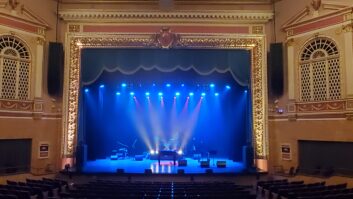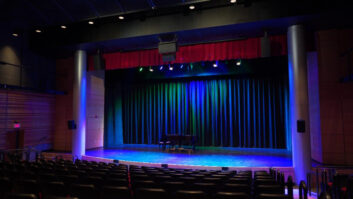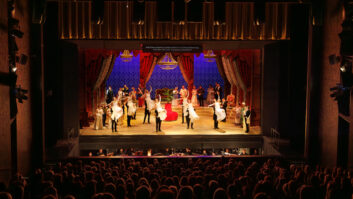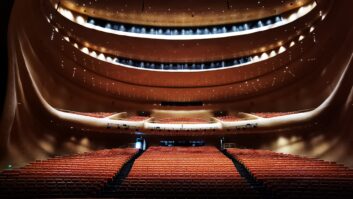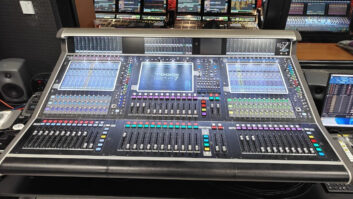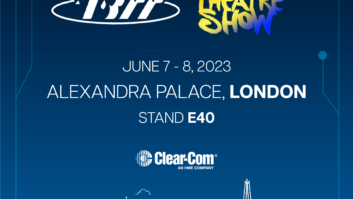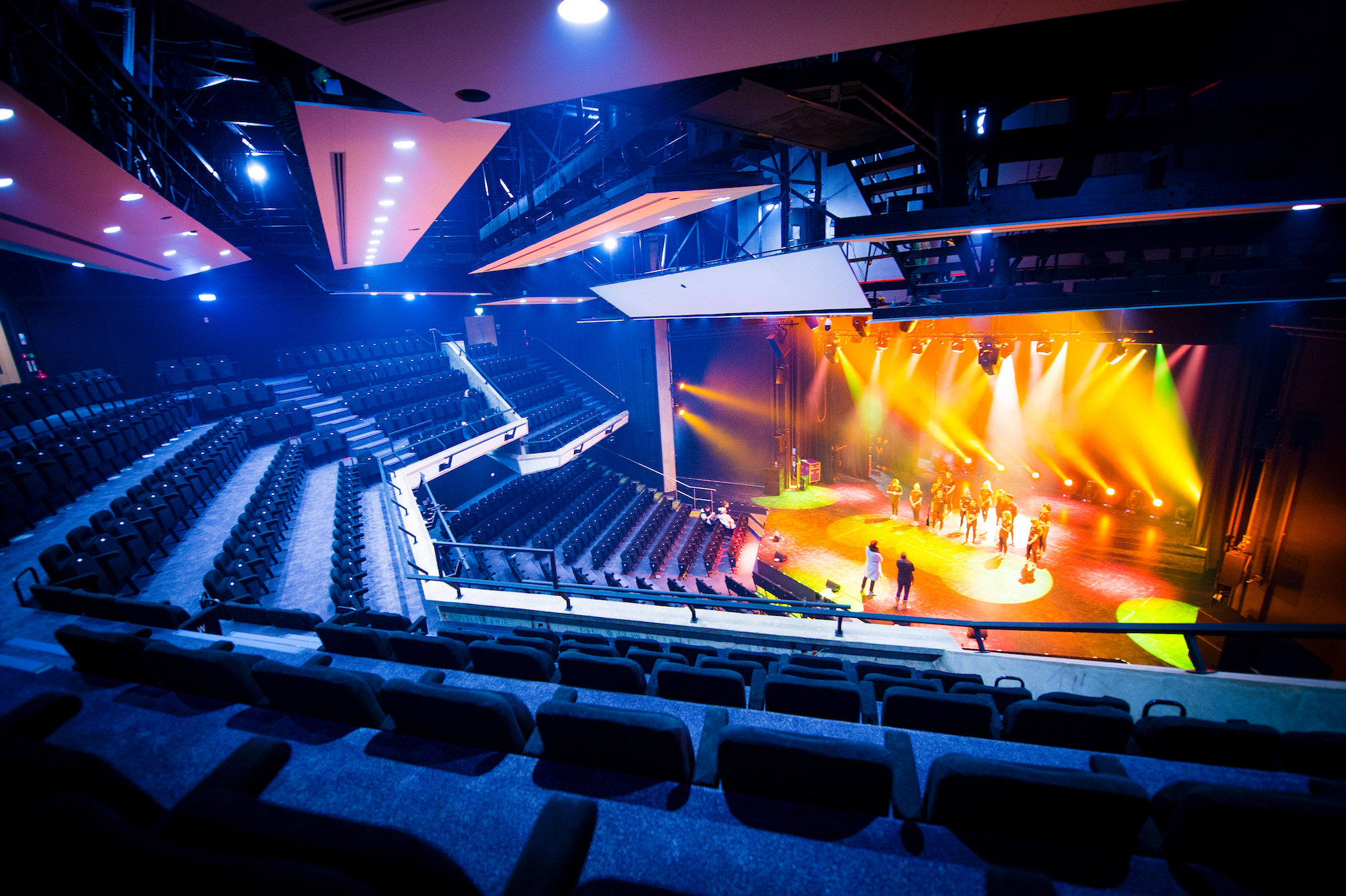
Opened by theatrical giant Sir Ralph Richardson in 1973, Leicester’s Haymarket Theatre was originally operated by the Leicester Theatre Trust; but after the Trust moved to the newly built Curve Theatre in 2007, the Haymarket stood unused and unloved for over a decade. The local authority, which owns the lease, had made attempts to find a buyer without success. Then, in June 2016, the management of the theatre was taken over by an organisation known as the Haymarket Consortium. Their collective vision and commitment, along with a £3.6m investment from the local authority, mean that the Haymarket Theatre is finally reawakening. In the words of Leicester City Mayor Sir Peter Soulsby, “The council’s investment will create a new cultural destination in the city centre that will offer opportunities for jobs, training and work experience, while freeing the council of the burden of the building’s service charges by 2020.”
One of the consortium’s directors, Jed Spittle, comments: “We’re very excited about bringing the old theatre back into use. There was no ‘off-the shelf’ solution to the unique challenge the Haymarket Theatre presents, so [fellow director] Chris Knight and myself decided to pull together a new team of experts, from differing fields and with a passion for the building, and form this new consortium.
“Our original proposal anticipated the phased refurbishment of the theatre, with areas such as the auditorium being brought back into use as funds became available. But in order for our business plan to be viable, we concluded that we would need to reinstate the auditorium from the outset. Our aim is to create a fully equipped professional performance and rehearsal space – complete with bar and catering facilities – that will allow us to maximise our income streams from the start. From 2020, that income will cover the costs of the annual service charges and finally put an end to the city council’s financial responsibilities for the building.”
Training theatre
Knight highlights another ambition for the reborn facility, as a learning facility that could ultimately be recognised as a national training theatre supporting students studying for production and performance qualifications. He comments: “Through our collective experience in industry, augmented by numerous conversations with industry colleagues, we’ve established that there is a demand for industry-led training. This training needs to be current and adaptable – the concept being developed is that of a teaching and training theatre, where students are taught through a mixture of theory and practical sessions, working alongside a professional team to gain experience during the operation of the venue.
“Ultimately the aim is to teach from GCSE and BTEC through to degree level, and we welcome suggestions from the industry on what they’d like to see included in technical, production, performance and stage management courses.”
The newly refurbished Haymarket will be a multi-role facility featuring theatre productions, esports tournaments, live music, awards, parties and conferences. To accommodate its busy future programme, the main auditorium has been refurbished with 900 new seats and state-of-the-art sound and lighting systems, while elsewhere a café, licensed bar and TV gallery have also been created. The foyer, studio theatre and entrance areas have been extensively modernised while retaining the original feel of the old Haymarket Theatre.
Autograph Sales & Installations has been central to bringing the theatre’s audio infrastructure up to the standards expected of a modern performance space. While originally recommended to the theatre as a potential supplier of the equipment specified by Chris Knight, Autograph’s involvement effectively became that of an audio consultant – in the event the company played a pivotal role in the sound design for the main auditorium, engineered multi-role mobile systems and created bespoke cabling solutions and much else.
The paging and voice evacuation solutions are good examples of how the actual design evolved during the project, as Autograph’s Chris Austin explains: “A basic voice alarm system was installed by the building contractors and the original backstage paging was designed to be simple show relay plus calls to dressing rooms and offices. Halfway through the project it was decided that a more comprehensive emergency voice system was needed, more for inward evacuation and lockdown situations than fire, and we were able to modify our own designs to meet the revised spec as economically as possible.
“In the event we finished with a regular two-zone paging system for day-to-day theatre use, with a station at stage door which can page to eight individual areas including auditoria and stages, all run from the QSC Q-SYS platform.”
A single Q-SYS Core 110f is linked via gigabit Ethernet to a single CXD8.4Q eight-channel amplifier, which powers all the paging zones. The Core processor also runs a Williams Sound Hearing Hotspot device, which provides assisted listening over Wi-Fi on visitors’ mobile phones.
Autograph also installed over 20km of cabling and custom panelwork, providing a venue-wide network for audio signal, data, video and loudspeakers plus fibre. It is one of the very few companies in the UK that could undertake such a multi-disciplinary role completely in-house.
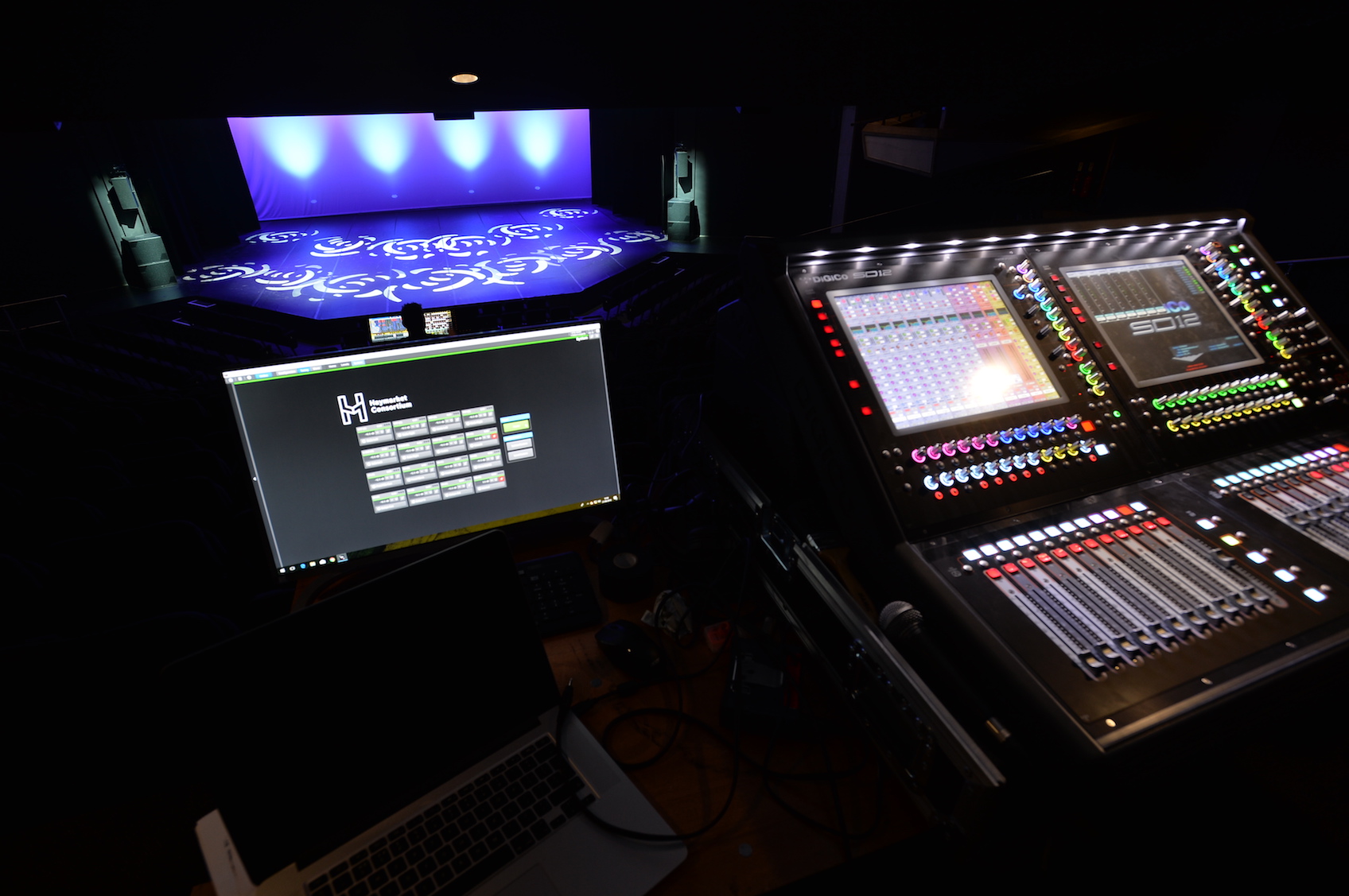
d&b audiotechnik’s broad portfolio of point-source products feature throughout the entire complex. The main auditorium is a wide but shallow space in which a line array would offer no advantages; proscenium-mounted V7Ps with V-SUBs are used for the main system, with E6s on the circle (balcony) front and a single Yi10P enclosure as a centre/downfill module. A row of E8s are used as front fills, a unit chosen because its power and coverage allows the maintenance of the room’s audio image regardless of the type of event. Everything in the main house is driven by d&b 30D and 10D DSP-equipped amplifiers. Hosting live music events means the provision of suitable monitoring facilities, and so Autograph also supplied four each of d&b M4 and M6 stage monitors, driven from D12 touring amplifier racks with panelwork modified to suit the theatre’s needs.
Flexible system
The Studio Theatre employs a flexible system comprising more E8s, E6s, E5s and B4 subwoofers, the configuration of which varies with application. Finally, a dedicated mobile set-up including four V-SUB and two V7Ps driven from a single D20 amplifier/controller is available for deployment anywhere it’s needed.
The consoles of choice are all DiGiCo – an SD10 for FOH duties in the main auditorium, an SD12 for monitors, an SD9 in Studio Theatre and an SD11 for the mobile system. All the DiGiCo consoles are equipped with the optical package so they can connect easily to the theatre’s two SD-racks, a D-Rack and an SD-Mini rack as required. Autograph also supplied custom 12-way stage boxes and multicores as well as a range of playback equipment.
Knight originally specified Shure’s ULXD system for his wireless needs but the same company’s brand new Axient Digital product became available just in time – consequently the Haymarket is one of the first venues in the UK to own this cutting-edge radio mic technology, with 18 channels in use throughout the building. The transmitters are a mix of bodypacks and hand-held models and Autograph also supplied a kit of Shure’s industry-standard stage microphones. All the sub-miniature microphones are from Point Source Audio’s EMBRACE range, which can all be worn either ear-mounted or as a standard lavalier.
All three manufacturers that he approached separately referred Knight to Autograph. He comments on his experiences working with the Autograph team led by Chris Austin: “Autograph and their team were an absolutely invaluable resource in the planning and delivery of the sound system on which we rely. So much more than just a supplier, their contribution went far beyond the purely technical – frankly, without them this project would not have happened and we would not now be one of the best-equipped regional theatres in the country.
“I honestly cannot recommend them strongly enough. Anyone who needs an audio infrastructure for a theatre or performance space and wants it done properly, don’t go to anyone else.”
www.audixusa.com
www.autographsales.co.uk
www.dbaudio.com
www.digico.biz
www.haytheatre.com
www.point-sourceaudio.com
www.radialeng.com
www.sennheiser.com
www.shure.eu
www.williamssound.com
